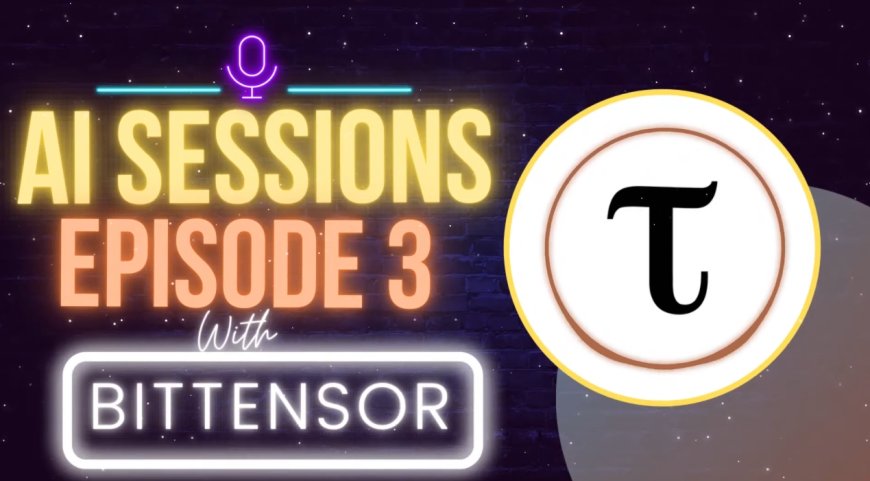The Revolution of Decentralized AI: How Bit Tensor is Reshaping Machine Learning
In the rapidly evolving landscape of artificial intelligence and blockchain technology, Bit Tensor stands out as a pioneering project that aims to revolutionize the way we approach machine learning and AI development

In the rapidly evolving landscape of artificial intelligence and blockchain technology, Bit Tensor stands out as a pioneering project that aims to revolutionize the way we approach machine learning and AI development. By leveraging the power of decentralized AI and distributed computing, Bit Tensor is creating a new paradigm for AI research and application development. In this comprehensive overview, we'll explore the core concepts behind Bit Tensor, its innovative approach to AI, and its potential impact on the future of technology.
Understanding Bit Tensor and Decentralized AI
Bit Tensor is an open-source protocol that powers a decentralized, scalable neural network. The project combines the computational power of distributed networks with cutting-edge machine learning techniques to create a system that can potentially rival or surpass traditional centralized AI development models.
At its core, Bit Tensor uses a blockchain-based incentive system to encourage participants to contribute computational resources to the network. This approach allows the project to harness a vast amount of distributed computing power, potentially creating one of the world's largest supercomputers dedicated to AI research and development.
Key Components of the Bit Tensor Network
- Miners: These are the nodes in the network that perform machine learning tasks and contribute computational power.
- Validators: They ensure the integrity of the network by verifying and ranking the outputs of miners.
- Tau Token: This is the native cryptocurrency of the Bit Tensor ecosystem, used to incentivize participation and govern the network.
The Path to Artificial General Intelligence (AGI)
While Bit Tensor is not explicitly designed to create Artificial General Intelligence, the project's approach to distributed machine learning could potentially contribute to advancements in this field. Const, one of Bit Tensor's lead developers, defines AGI as "the ability to adapt to a large number of problems" and suggests that a more appropriate term might be "human-obsoleting intelligence."
The project's focus on creating a diverse, decentralized network of AI models could lead to more robust and adaptable systems that can tackle a wider range of problems than traditional, centralized AI approaches.
Bit Tensor's Unique Approach to Machine Learning
Bit Tensor's approach to machine learning is inspired by thermodynamic properties of nature. Just as energy in the natural world flows to dissipate gradients, Bit Tensor uses digital currency as an abstraction of energy to drive the production of machine intelligence.
The project employs a mixture model approach, where the overall AI system is composed of multiple, specialized models that work together. This allows for greater flexibility and adaptability compared to monolithic AI systems.
Key Features and Innovations
- Decentralized Computation: By leveraging a network of distributed nodes, Bit Tensor can potentially outperform centralized AI systems in terms of raw computational power.
- Incentivized Participation: The Tau token provides a direct economic incentive for individuals and organizations to contribute their computing resources to the network.
- Adversarial Resistance: The project has developed innovative techniques to prevent cheating and ensure the integrity of the machine learning process in a decentralized environment.
- Subnetworks: Bit Tensor is developing specialized subnetworks that focus on specific AI tasks, such as image processing or natural language understanding.
- Open-source Development: The project's open-source nature allows for rapid innovation and community-driven improvements.
The Road to Competitive AI
While Bit Tensor is still in its early stages, the project has shown remarkable progress in its first year. The team expects to be competitive with leading AI companies within about a year, thanks to the rapid development pace enabled by their decentralized, incentive-driven model.
The project's approach allows for faster innovation compared to traditional AI development methods. Once Bit Tensor reaches a competitive level of performance, it has the potential to quickly gain widespread adoption and potentially surpass centralized AI solutions.

Challenges and Future Developments
As Bit Tensor continues to grow, it faces several challenges:
- Balancing Decentralization and Control: The project aims to gradually decentralize control through the implementation of a DAO (Decentralized Autonomous Organization) while maintaining the necessary oversight during its early stages.
- Hyperparameter Optimization: Fine-tuning the network's parameters to ensure optimal performance across a diverse range of nodes and tasks is an ongoing challenge.
- Client-side Development: Building effective tools and interfaces for end-users to leverage the Bit Tensor network is a key focus for the team.
- Scalability: As the network grows, maintaining performance and efficiency becomes more challenging.
The Future of Bit Tensor and Decentralized AI
As Bit Tensor continues to develop, it has the potential to revolutionize the AI landscape. Some potential future developments include:
- AI-as-a-Service: Decentralized AI could make advanced machine learning capabilities accessible to a wider range of businesses and individuals.
- Collaborative AI Development: The open-source nature of Bit Tensor could lead to unprecedented collaboration in AI research and development.
- Specialized Hardware: As the network grows, there may be opportunities for the development of specialized hardware (similar to ASIC miners for cryptocurrencies) optimized for Bit Tensor computations.
- Integration with Polkadot: Bit Tensor's planned integration with the Polkadot ecosystem will provide enhanced security and cross-chain communication capabilities.
Ethical Considerations and Governance
Bit Tensor's decentralized approach to AI development raises important ethical considerations:
- Democratization of AI: By distributing ownership and control, Bit Tensor aims to prevent the concentration of AI power in the hands of a few large corporations or governments.
- Transparency and Accountability: The open-source nature of the project allows for greater scrutiny and community oversight of AI development.
- Bias Mitigation: The diverse, global network of contributors could potentially help reduce biases that might be present in more centralized AI development processes.
- Governance Challenges: As the project moves towards a DAO model, ensuring effective and fair governance will be crucial for its long-term success.
Conclusion: A New Paradigm for AI Development
Bit Tensor represents a bold new approach to AI development, one that leverages the power of blockchain technology and decentralized networks to create more ethical, transparent, and accessible artificial intelligence. By distributing ownership and control of AI systems, Bit Tensor aims to ensure that the benefits of this powerful technology are shared more equitably across society.
As the project continues to evolve and grow, it has the potential to reshape the AI landscape, challenging traditional models of development and ownership. While there are certainly challenges ahead, the innovative approach and passionate community behind Bit Tensor make it a project worth watching closely in the coming years.
The success of Bit Tensor could have far-reaching implications for the future of technology and society. By democratizing access to AI capabilities, it could empower individuals and small organizations to compete with tech giants, fostering innovation and diversity in AI applications. Moreover, the decentralized nature of the project could help address concerns about AI bias and ethical issues by involving a more diverse group of stakeholders in the development process.
As we stand on the brink of a new era in AI development, projects like Bit Tensor remind us that the future of technology is not predetermined. By reimagining the foundations of how we create and interact with AI, we have the opportunity to shape a future that aligns more closely with our collective values and aspirations.
For those interested in the future of AI and decentralized technologies, Bit Tensor offers an exciting opportunity to be part of a potentially transformative movement. Whether you're a developer looking to contribute to the project, an AI researcher interested in exploring new paradigms, or simply an enthusiast eager to see where this technology leads, Bit Tensor invites you to join its journey towards a more open, accessible, and ethically aligned future for artificial intelligence.
Source : @The Bittensor Hub.
















